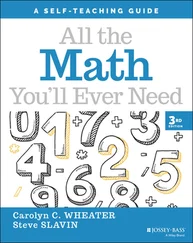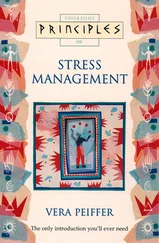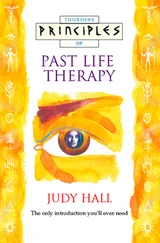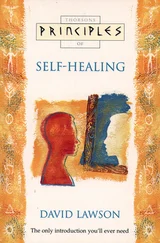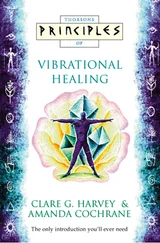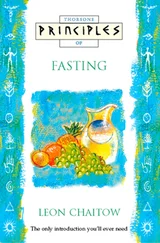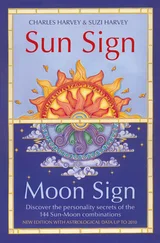Such theories may perhaps explain certain very limited astrological phenomena. However elegant some of these theories are, though, they simply cannot explain how it is that a chart set for the moment of the formation of a company can provide detailed information about its likely company style, its development and the kind of people that it will attract to it.
In the next chapterwe look at the central philosophical principles upon which astrology is traditionally based. Even if you are someone who would prefer a neat physical cause-and-effect model, you will find that if you engage with these ideas they will provide a framework within which to think about astrology.
The philosophy of the astrological world-view, which assumes an intimate, meaningful connection between the above and the below, has never been more eloquently expressed than by the writings attributed to the wise Egyptian Hermes Trismegistus. In this passage, the relationship of the Cosmic Principles to their Source is being explained to Hermes by the great Pymander: (from The Divine Pymander of Hermes Trismegistus , ed. The Shrine of Wisdom, 1970.)
1 Hermes Trismegistus: Many men have affirmed many and diverse things concerning the Cosmos and God, but I have not learned Truth; therefore, O Lord, make plain these things to me.
2 Pymander: Hear, then, my Son, how these things are of God and the Cosmos.
3 God; Eternity; the Cosmos; Time; Generation.
4 God maketh Eternity;Eternity maketh the Cosmos;The Cosmos maketh Time;Time maketh Generation.
5 The Substance, or Essence, as it were, of God, is the Good, the Beautiful, Blessedness, and Wisdom;of Eternity, is Identity and Sameness;of the Cosmos, is Order;of Time, is Change;of Generation, is Life and Death.
6 The Operation, Energy, or Activityof God, is in Nous and Soul;of Eternity, is in Permanence and Immortality;of the Cosmos, is in Integration and Re-integration;of Time, is in Augmentation and Diminution;of Generation, is in Qualities.
7 Therefore, Eternity is in God;The Cosmos is in Eternity;Time is in the Cosmos;Generation is in Time.
8 Eternity abides with God;The Cosmos is moved in Eternity;Time is accomplished (i.e. has its limit) in the Cosmos;Generation takes place in Time.
9 Therefore, the Source and Foundation of All is God, but the Essence of Substance is Eternity; and the Matter is the Cosmos.
10 The Power of God is Eternity; the Work of Eternity is the Cosmos, which is unmanifest and also ever being made manifest by Eternity.
11 Therefore the Cosmos shall never be destroyed, nor the things in it perish, for Eternity is indestructible, and the Cosmos is contained and encompassed by Eternity.
At the end of the 20th century, the re-emergence of astrology challenges the Western mind once again to find a framework of thought that can resolve the tension that has existed since the Greeks – between Platonic idealism with its emphasis on consciousness and Aristotelian empiricism with its emphasis on matter. For, of all studies, astrology demands a philosophy and framework of thought that embraces both physics and metaphysics, the temporal and the eternal, the manifest and the unmanifest, the observed and the intuited, the material and the formal. The phenomena of astrology demand a model of the universe that is inclusive of quantity and qualities, matter and consciousness. Hermes Trismegistus’s perspective, above, with its emphasis on the relation of the temporal to the eternal, offers such a resolution in principle. The problem, then, is to translate these insights into a form and language that is intelligible to contemporary thought.
One contemporary thinker who has embraced this challenge is Will Keepin, a nuclear physicist, whose mother and father were both nuclear physicists, who is also a practising astrologer. Keepin has been obliged by the reality of his astrological experience to engage with the resoltion of these worldviews. He finds a meeting place in the work of the late David Bohm, a student of Einstein, who was until recently Professor of Theoretical Physics at London University. In his book Wholeness and the Implicate Order , Bohm pictures the universe as having both an implicate, eternal, ‘enfolded’ order which is unfolded in the explicate order of space-time. Bohm sees each moment of space-time as both an explicit manifestation of a particular part of that implicate order and a point of access and linkage to that Wholeness. This evokes the holographic image of reality that we see reflected in the relationship between cells in a body and the body as a whole. In an interview in The Mountain Astrologer , February/March 1997, Keepin sums up the implications of Bohm’s work and his own thinking as follows:
Any natural science from physics to biology to astrology is basically an enterprise of pattern recognition, which utilizes a naturally existing order to discern replicable truths. So astrology is a science of the order in meaning, and the correlation between the subtle order and the Cartesian order in the physical motion of the planets.
For each point in space-time there is a unique astrological chart. I see the astrological chart as a kind of cosmic indexing of the unfolding cosmos. In this grand evolutionary process, each point in the emergent space-time is characterized by a unique astrological chart. It is almost as if the chart is an index for the creative process of cosmic evolution. And when one is born with a particular chart, one becomes an ambassador of sorts to the rest of the cosmos, representing a unique moment in the cosmic space-time to the rest of the cosmos as it continues to unfold.
Each one of us is expressing a particular aspect of the mystery and bringing it into fluid relationship with the rest of the unfolding mystery. Now in terms of astrology and the implicate order, I see the implicate order as a vast realm of meaning and purpose and all of the invisible and intangibles, including, at its deepest levels, the creative process of love itself.
The implicate order is essentially the whole of the unmanifest realm, and the laws that operate in that domain. Astrology is an attempt to map out some of the elementary workings in that domain, and it works by utilizing the non-Cartesian order and non-material laws that govern that domain.
When Keepin’s perspective is put together with the insights of the great British astrologer, philosopher and mystic John Addey, who also draws on Bohm, as in A New Science of Astrology , a picture begins to emerge of astrology as a systematic algebra of life and consciousness which is entirely compatible with the new physics. But not only is astrology in accord with the new physics, it also has the power to reveal to physics and philosophy a profoundly potent dimension of reality which was familiar to the ancients but which has been all too long neglected and denied. This is the dimension of cosmic meaning, purpose and intention.
Nothing exists nor happens in the visible sky that is not sensed, in some hidden moment, by the faculties of Earth and Nature.
JOHANNES KEPLER (1571–1630), FROM DE STELLA NOVA
The Cosmos is a living body of Ideas.
PLATONIC DICTUM
Astrology views the cosmos as an intelligent and harmonious whole. It sees it as being shaped and unfolded constantly by cyclical processes in which we, as conscious, reflective human beings, can participate. Whether we choose to reflect rationally on these cosmic processes or not, we participate in them intrinsically at every level of our being. This is the astrologer’s world view – that we are each a universe in miniature. This chapter gives an overview of the first principles on which astrology is based – those principles which are at work in the world and within us.
Читать дальше


